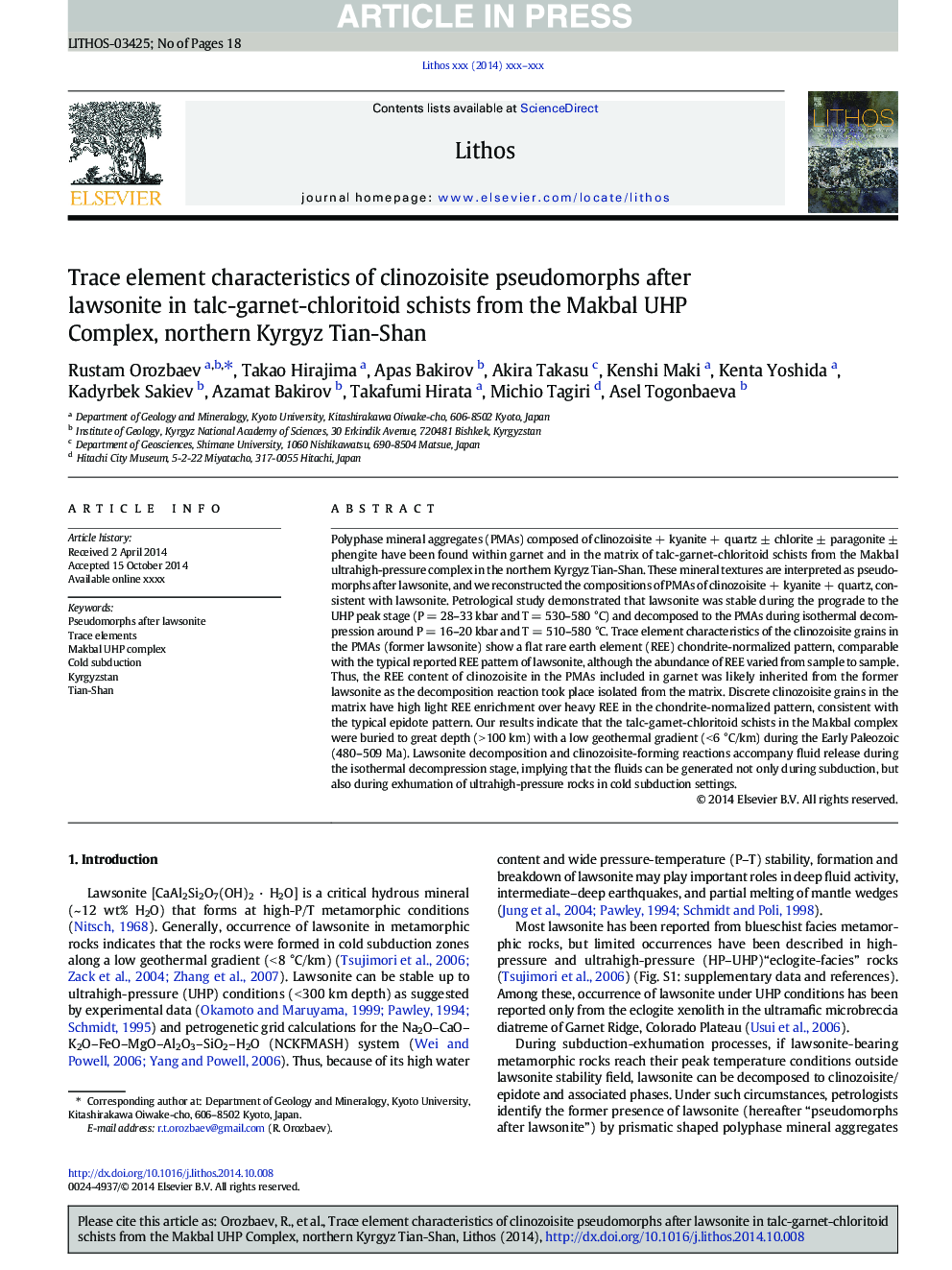| کد مقاله | کد نشریه | سال انتشار | مقاله انگلیسی | نسخه تمام متن |
|---|---|---|---|---|
| 6440712 | 1638664 | 2015 | 18 صفحه PDF | دانلود رایگان |
عنوان انگلیسی مقاله ISI
Trace element characteristics of clinozoisite pseudomorphs after lawsonite in talc-garnet-chloritoid schists from the Makbal UHP Complex, northern Kyrgyz Tian-Shan
دانلود مقاله + سفارش ترجمه
دانلود مقاله ISI انگلیسی
رایگان برای ایرانیان
موضوعات مرتبط
مهندسی و علوم پایه
علوم زمین و سیارات
ژئوشیمی و پترولوژی
پیش نمایش صفحه اول مقاله

چکیده انگلیسی
Polyphase mineral aggregates (PMAs) composed of clinozoisite + kyanite + quartz ± chlorite ± paragonite ± phengite have been found within garnet and in the matrix of talc-garnet-chloritoid schists from the Makbal ultrahigh-pressure complex in the northern Kyrgyz Tian-Shan. These mineral textures are interpreted as pseudomorphs after lawsonite, and we reconstructed the compositions of PMAs of clinozoisite + kyanite + quartz, consistent with lawsonite. Petrological study demonstrated that lawsonite was stable during the prograde to the UHP peak stage (P = 28-33 kbar and T = 530-580 °C) and decomposed to the PMAs during isothermal decompression around P = 16-20 kbar and T = 510-580 °C. Trace element characteristics of the clinozoisite grains in the PMAs (former lawsonite) show a flat rare earth element (REE) chondrite-normalized pattern, comparable with the typical reported REE pattern of lawsonite, although the abundance of REE varied from sample to sample. Thus, the REE content of clinozoisite in the PMAs included in garnet was likely inherited from the former lawsonite as the decomposition reaction took place isolated from the matrix. Discrete clinozoisite grains in the matrix have high light REE enrichment over heavy REE in the chondrite-normalized pattern, consistent with the typical epidote pattern. Our results indicate that the talc-garnet-chloritoid schists in the Makbal complex were buried to great depth (> 100 km) with a low geothermal gradient (< 6 °C/km) during the Early Paleozoic (480-509 Ma). Lawsonite decomposition and clinozoisite-forming reactions accompany fluid release during the isothermal decompression stage, implying that the fluids can be generated not only during subduction, but also during exhumation of ultrahigh-pressure rocks in cold subduction settings.
ناشر
Database: Elsevier - ScienceDirect (ساینس دایرکت)
Journal: Lithos - Volume 226, 1 June 2015, Pages 98-115
Journal: Lithos - Volume 226, 1 June 2015, Pages 98-115
نویسندگان
Rustam Orozbaev, Takao Hirajima, Apas Bakirov, Akira Takasu, Kenshi Maki, Kenta Yoshida, Kadyrbek Sakiev, Azamat Bakirov, Takafumi Hirata, Michio Tagiri, Asel Togonbaeva,